You've invested in a wine fridge to keep your prized collection at the perfect temperature, but suddenly, it's not cooling as it should. What could be causing this issue, and how can you fix it?
In this blog post, we'll explore six common reasons "why is my wine fridge not cooling" and provide practical solutions for each. Rest assured, with a little troubleshooting and maintenance, you'll have your wine fridge back in tip-top shape in no time.
Short Summary
- Common causes for wine fridge malfunctions can be attributed to thermostat issues, compressor problems and ventilation concerns.
- Proper maintenance and proper placement are essential for optimal performance of a wine fridge.
- Troubleshooting requires knowledge of checking door seals, inspecting fan motors & wiring, and identifying major malfunctions. Professional repair may be necessary in complex cases.
Common Causes for Wine Fridge Malfunctions
Before diving into specific issues, it's essential to understand the common causes for wine fridge malfunctions. Generally, these problems can be categorized into three areas: thermostat issues, compressor problems, and ventilation concerns.
By identifying the root cause, you can effectively address and rectify the problem, ensuring your wine collection stays at the optimal temperature.
Thermostat Issues in Wine Coolers

Thermostat issues in wine coolers are often caused by incorrect setting or calibration, which can lead to the fridge not cooling properly. These issues can be rectified through manual reset or calibration, helping you maintain the desired temperature for your wine collection.
However, if the internal thermostat has malfunctioned, it's best to call in a professional repair technician to fix the issue and ensure the cooling cycle is restored.
Compressor Problems in Wine Coolers
Compressor issues in wine coolers can stem from various factors, such as dust accumulation, a clogged condenser, or a malfunctioning fan motor. These problems can affect the circulation of cold air within your wine fridge, leading to inadequate cooling performance.
To address these issues, it's essential to clean and maintain your compressor wine fridge regularly, inspecting for obstructions and performing routine upkeep.
Ventilation Concerns in Wine Fridges
Ventilation concerns in wine fridges can arise from blockages or faulty fan motors. To improve ventilation and ensure proper performance, consider decluttering shelves, checking door seals, investing in high-quality fan motors, and ensuring all vents are free from obstruction.
Proper placement and ventilation are crucial to maintaining optimal temperatures for your wine collection, ensuring that hot air doesn't negatively impact the quality of your wines.
Types of Wine Fridges: Compressor vs. Thermoelectric
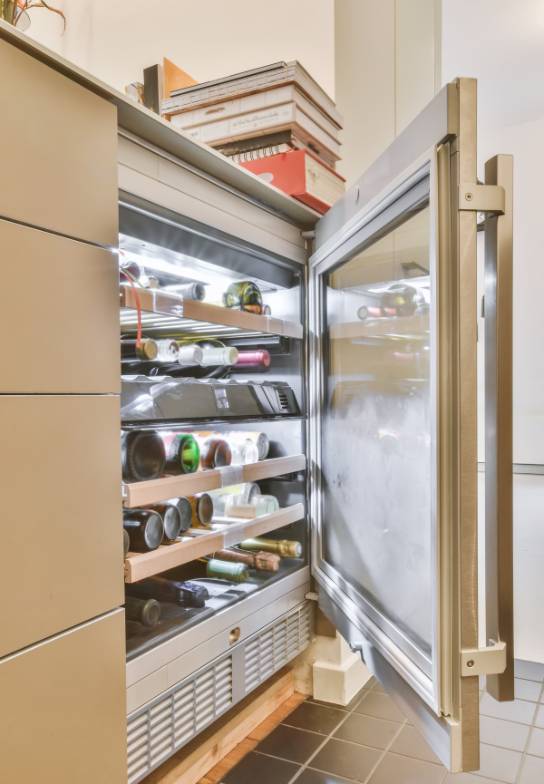
When it comes to wine fridges, there are two main types to consider: compressor and thermoelectric. Each type has its advantages and disadvantages, and understanding these differences can help you choose the best wine fridge for your needs.
For instance, ambient temperature can significantly impact the performance of thermoelectric wine fridges, requiring a more stable environment, such as a cooler room, for optimal operation.
Compressor Wine Fridges
Compressor wine coolers, also known as wine fridges, are known for their larger storage capacity and ability to cool at lower temperatures compared to thermoelectric coolers. However, they are less energy efficient and have more moving parts, which may require more maintenance over time.
If you have a large wine collection and require precise temperature control, a compressor wine fridge, also known as a wine refrigerator, may be the best option for you.
Thermoelectric Wine Coolers
Thermoelectric wine coolers, on the other hand, use less energy and have fewer moving parts, making them a more environmentally friendly option compared to a thermoelectric wine fridge. They operate using the Peltier effect, which transfers heat from one side of the cooler to the other, maintaining the internal temperature.
Despite their benefits, thermoelectric wine coolers can still experience malfunctions, so it's essential to understand how to troubleshoot and maintain them properly.
Maintaining Your Wine Fridge for Optimal Performance

To keep your wine fridge running at its best, regular maintenance is crucial. By taking care of your wine fridge, you can prevent many of the common issues that lead to cooling problems and ensure the longevity of your appliance.
In this section, we'll provide some essential tips for cleaning and maintaining your wine fridge, as well as advice on proper placement and ventilation.
Cleaning and Maintenance Tips
Keeping your wine fridge clean and well-maintained is the first step to ensuring its optimal performance. Regularly inspect the seals and gaskets for any signs of damage, and conduct the dollar bill test to evaluate the seal's tightness.
Additionally, invest in quality materials and follow the installation instructions provided with your wine fridge to avoid any unnecessary complications. By taking these steps, you can help prevent many common issues and keep your wine fridge operating smoothly.
Proper Placement and Ventilation
The placement of your wine fridge plays a significant role in its performance. Ensure there is sufficient airflow around the unit by positioning it away from walls and other objects, and avoid installing a thermoelectric wine cooler in a room that experiences temperature fluctuations.
Proper ventilation is essential for maintaining the right temperature for your wine collection, so pay close attention to your wine fridge's surroundings and adjust as needed.
Troubleshooting Wine Fridge Cooling Issues
When you encounter cooling issues with your wine fridge, it's essential to know how to troubleshoot effectively. In this section, we'll provide guidance on checking door seals and gaskets, inspecting fan motors and wiring, and identifying major malfunctions.
Armed with this knowledge, you'll be well-equipped to address any cooling issues that may arise and keep your wine fridge functioning at its best.
Checking Door Seals and Gaskets
Inspecting door seals and gaskets is a crucial step in diagnosing wine fridge cooling issues. A damaged or worn-out door seal can lead to decreased insulation performance. To fix this issue, replace any damaged seals or gaskets with new ones, properly aligned and lubricated, and adjusted if necessary.
By addressing these issues, you can help maintain the correct internal temperature for storing your wine collection.
Inspecting Fan Motors and Wiring
Another essential aspect of troubleshooting wine fridge cooling issues, especially when your fridge is not cooling, involves inspecting fan motors and wiring. Issues with these components can cause insufficient insulation, leading to temperature fluctuations, increased energy consumption, and poor cooling performance.
To resolve these issues, tighten screws, check seals and gaskets, invest in quality materials, and follow installation instructions for your wine fridge. By addressing these concerns, you can help ensure your wine fridge operates at peak efficiency.
When to Call a Professional Repair Technician

While many wine fridge cooling issues can be addressed through troubleshooting and maintenance, there are times when it's best to call in a professional repair technician.
In this section, we'll discuss when to call a professional, how to identify major malfunctions, and the importance of scheduling regular maintenance sessions to keep your wine fridge in top condition.
Calling a professional repair technician is the best option when the issue is too complex to troubleshoot or if the problem persists after troubleshooting. It's important to identify major malfunctions, such as a broken compressor or a faulty thermost.
Identifying Major Malfunctions
Major malfunctions, such as a broken evaporator or condenser fan, require prompt attention from a professional repair technician. These issues can significantly impact your wine fridge's cooling performance, jeopardizing the quality of your wine collection.
By identifying and addressing major malfunctions quickly, you can maintain the correct internal temperature for storing your wine and prevent further damage to your appliance.
Scheduling Regular Maintenance Sessions
Scheduling regular maintenance sessions with a qualified technician is crucial for extending the life of your wine fridge and ensuring it functions at its best. These sessions can help detect potential issues early, while also ensuring all components are securely sealed and free of leaks.
By investing in regular maintenance, you can enjoy peace of mind knowing your wine fridge is in top condition and your wine collection is stored at the perfect temperature.
👉 Related Reads: How to Serve Wine Properly, How to Decant Wine, Storing Wine at Home, How to Choose a Wine Fridge, How Long Does a Wine Fridge Last?, Built in vs Freestanding Wine Fridge, How to Load a Wine Fridge
Summary
A well-functioning wine fridge is essential for preserving the quality of your wine collection. By understanding common causes of wine fridge malfunctions, maintaining your appliance properly, and knowing when to call a professional repair technician, you can ensure your wine fridge operates at peak performance.
With these tips and insights, you'll be well-equipped to keep your wine collection stored at the perfect temperature, ready to be enjoyed whenever the occasion arises.
You may be interested in our article on the best large wine fridge. Our choices includes wine fridges of various sizes and models, equipped with the latest features and technologies to ensure that your wine collection is stored appropriately.
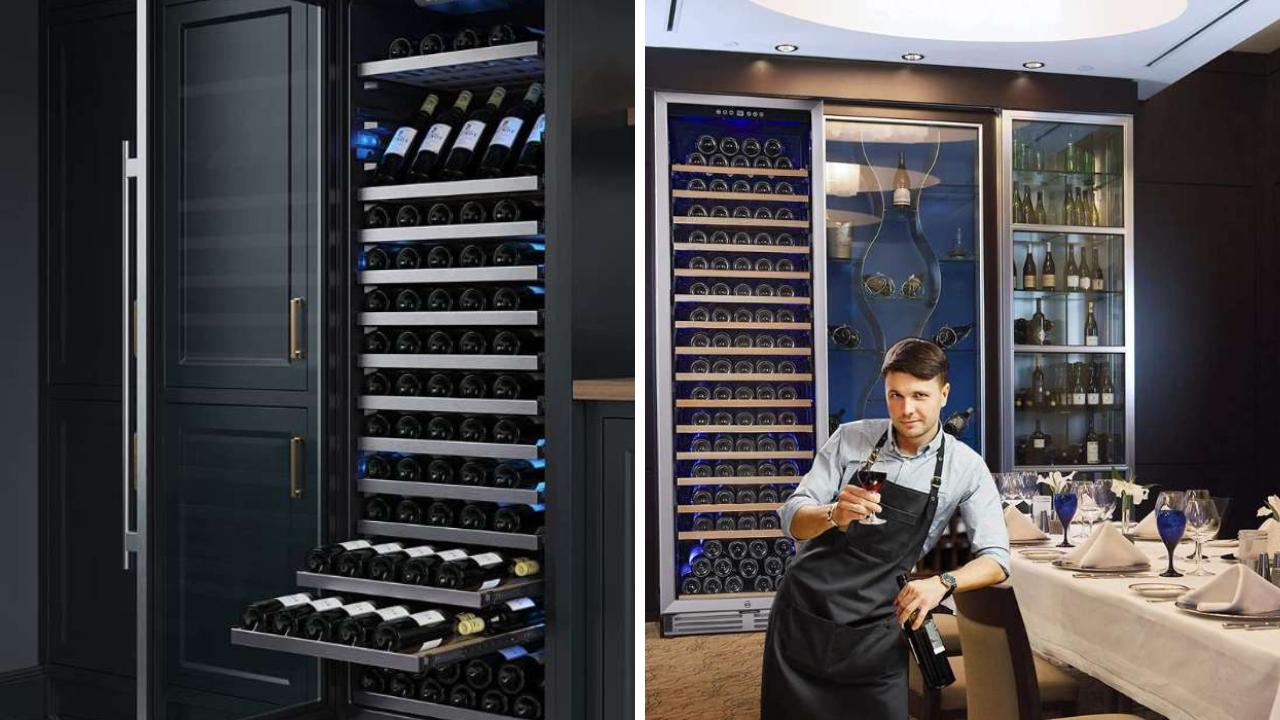
Or you may be interested in a slim wine fridge if you are limited on space.
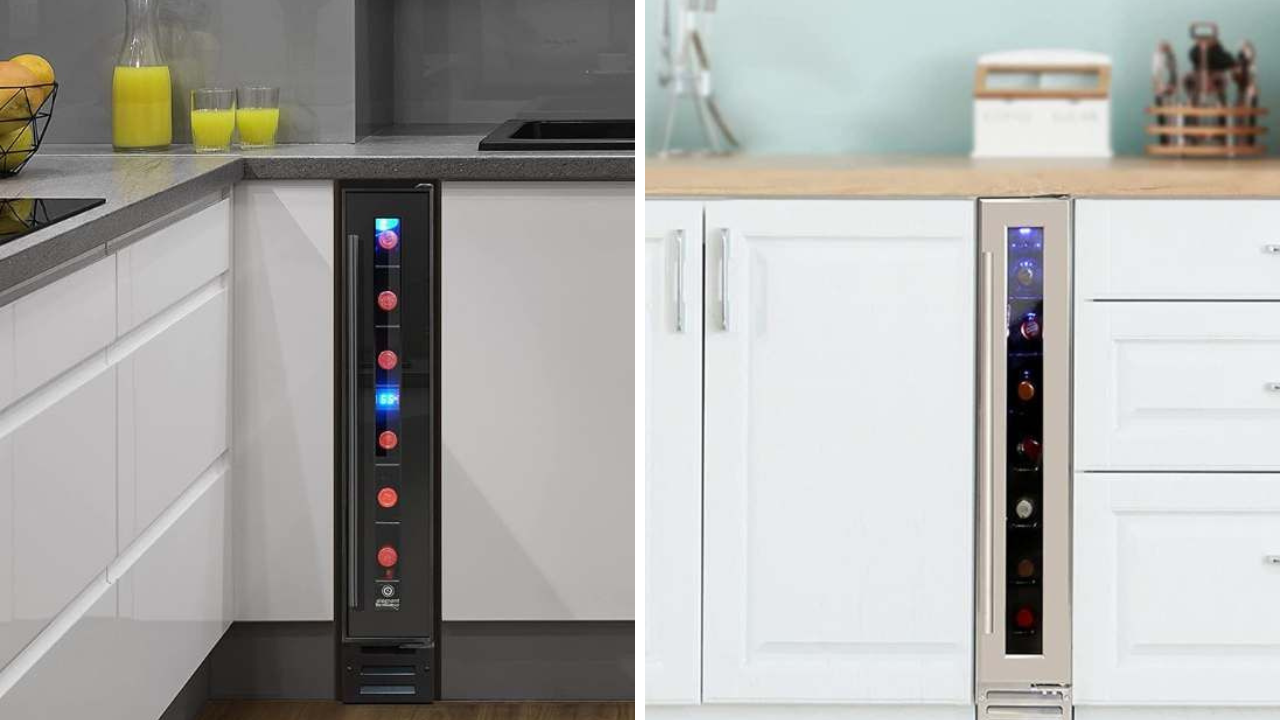
You may also enjoy reading about our top picks for the best under counter wine fridge.
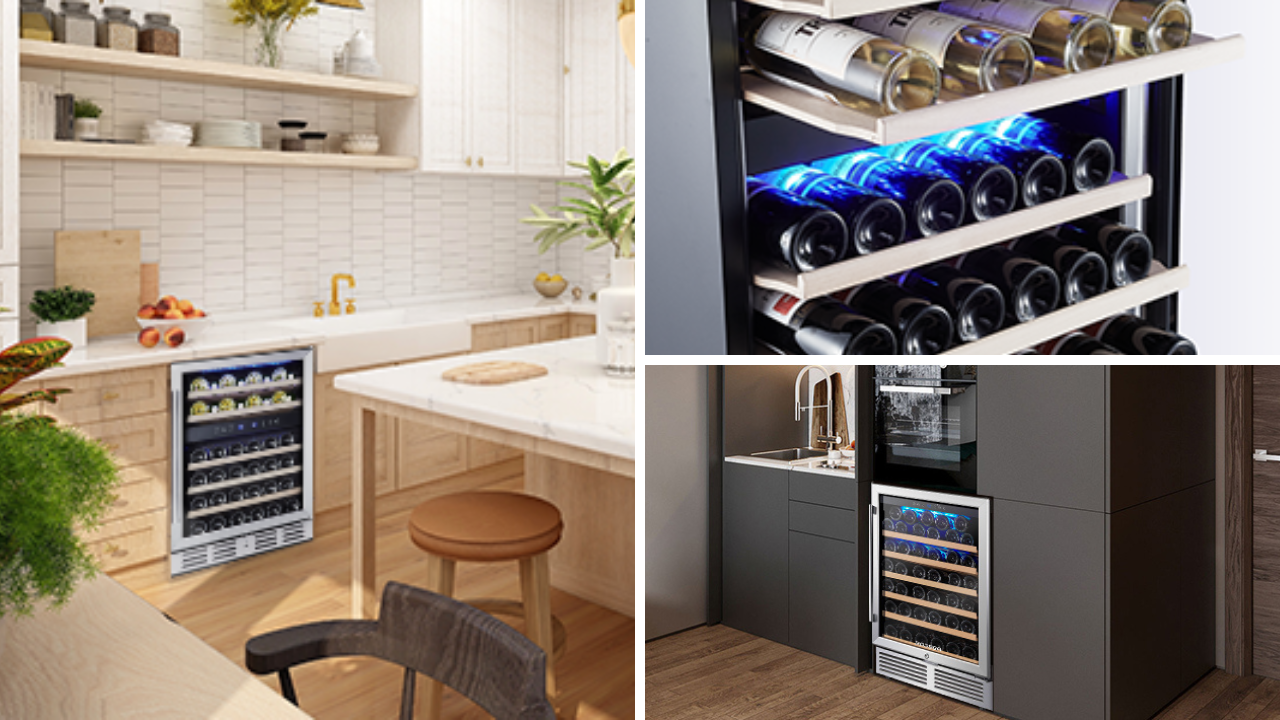
Finally, check out our blog post for our top picks for the Best Wine Fridge.
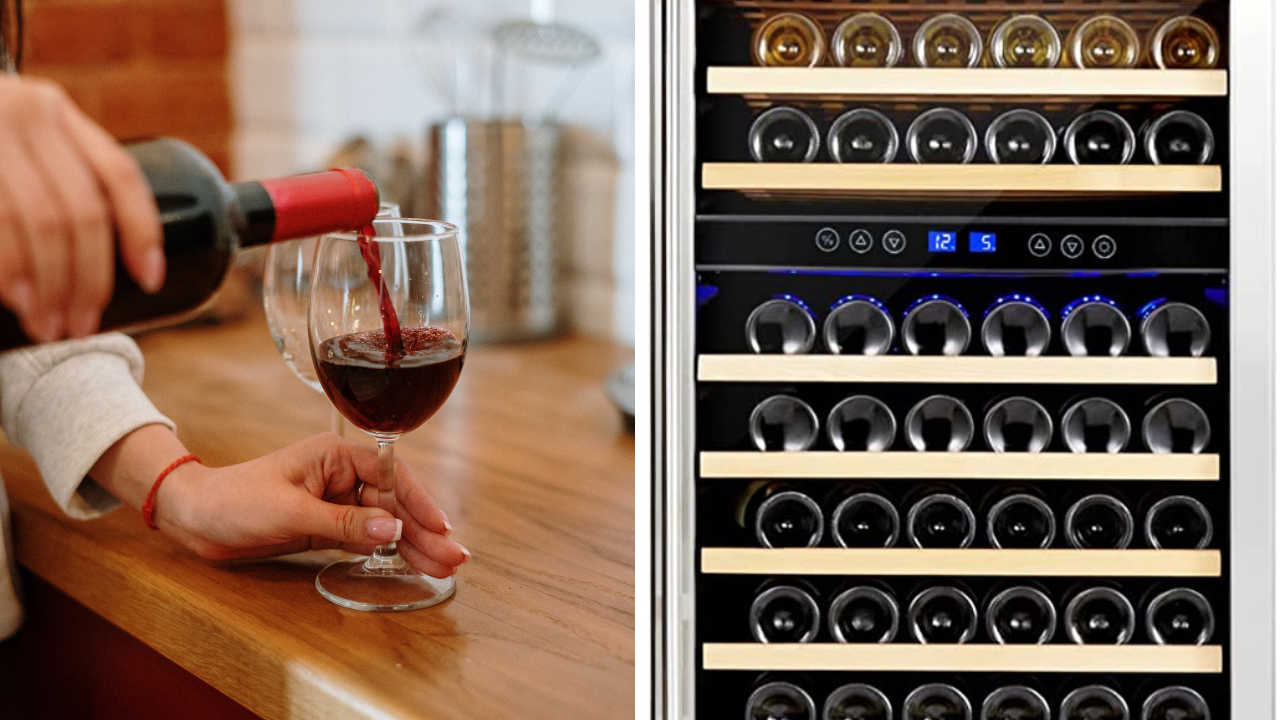
Frequently Asked Questions
How do you fix a wine refrigerator that won't cool?
Have trouble with your wine refrigerator? The most common solution is to clear the evaporator of any ice buildup, clean its coils, and make sure the fan blades are in working order. Doing so should ensure the fridge can cool the wine to the desired temperature.
Why does my wine fridge feel warm?
It is likely that your wine cooler is not cooling due to a malfunctioning thermostat. This supplies power to the components that control and adjust the fridge's temperature, so if it is broken, the interior of the fridge will get too warm. To fix this issue, you need to replace the thermostat.
Do wine fridges not get cold?
A wine cooler is different from a regular refrigerator and does not get as cold. The temperature of a wine cooler typically stays within the range of 46-64°F, so it is not cold enough to store other food items. Thus, a wine fridge does not get cold in the same way as a refrigerator.
Why is my wine cooler clicking but not cooling?
Based on the answers from our research, it seems that the clicking noise you hear is likely caused by the relay switch attempting to turn on the compressor. Since the cooler isn't cooling, it appears you may need to replace the relay switch to get it working properly again.










